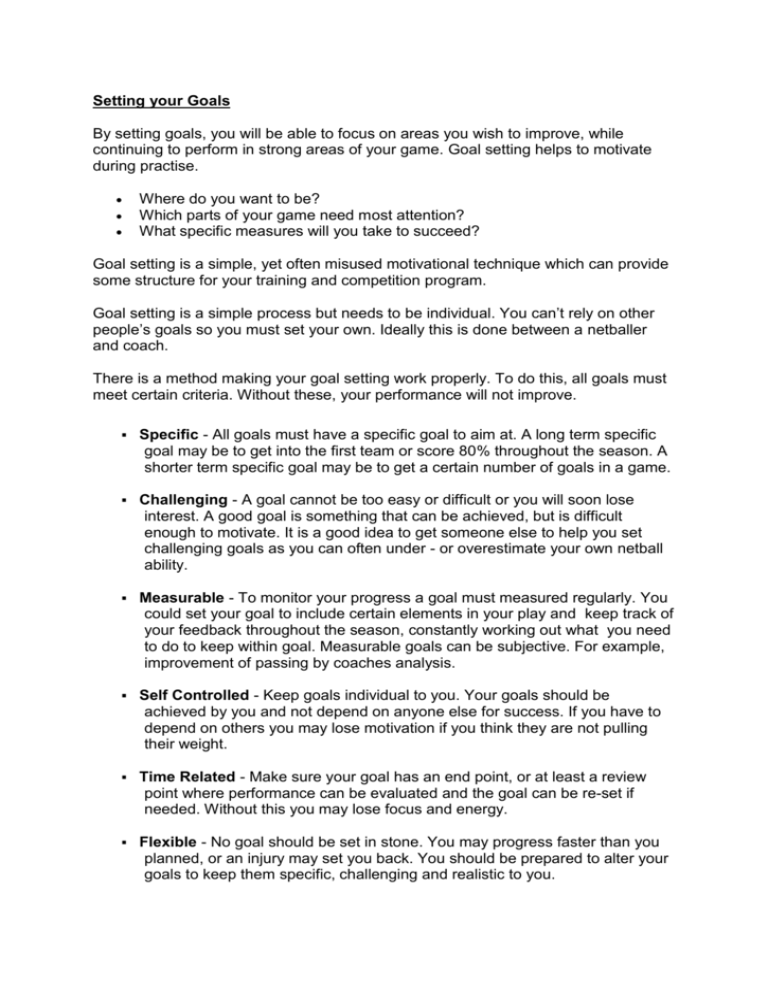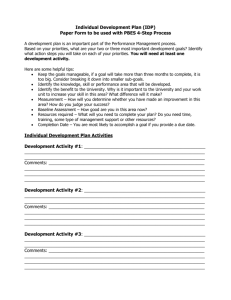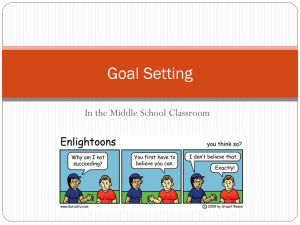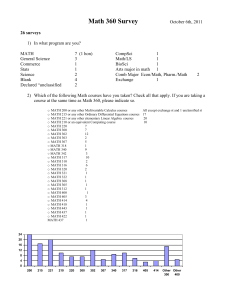Netball Goal Setting: A Guide to Improve Your Game
advertisement

Setting your Goals By setting goals, you will be able to focus on areas you wish to improve, while continuing to perform in strong areas of your game. Goal setting helps to motivate during practise. Where do you want to be? Which parts of your game need most attention? What specific measures will you take to succeed? Goal setting is a simple, yet often misused motivational technique which can provide some structure for your training and competition program. Goal setting is a simple process but needs to be individual. You can’t rely on other people’s goals so you must set your own. Ideally this is done between a netballer and coach. There is a method making your goal setting work properly. To do this, all goals must meet certain criteria. Without these, your performance will not improve. Specific - All goals must have a specific goal to aim at. A long term specific goal may be to get into the first team or score 80% throughout the season. A shorter term specific goal may be to get a certain number of goals in a game. Challenging - A goal cannot be too easy or difficult or you will soon lose interest. A good goal is something that can be achieved, but is difficult enough to motivate. It is a good idea to get someone else to help you set challenging goals as you can often under - or overestimate your own netball ability. Measurable - To monitor your progress a goal must measured regularly. You could set your goal to include certain elements in your play and keep track of your feedback throughout the season, constantly working out what you need to do to keep within goal. Measurable goals can be subjective. For example, improvement of passing by coaches analysis. Self Controlled - Keep goals individual to you. Your goals should be achieved by you and not depend on anyone else for success. If you have to depend on others you may lose motivation if you think they are not pulling their weight. Time Related - Make sure your goal has an end point, or at least a review point where performance can be evaluated and the goal can be re-set if needed. Without this you may lose focus and energy. Flexible - No goal should be set in stone. You may progress faster than you planned, or an injury may set you back. You should be prepared to alter your goals to keep them specific, challenging and realistic to you. 6 Steps to setting your goals Once you know the basic rules of setting goals you can go about setting your own. Here is how: 1. Assessment - Begin by building a profile of you as a player. Identify the areas you are strong at and the areas you would like to improve. This should include not only your technical skills but also physical fitness and mental approach. 2. Set a long term goal - Next you should work out an individual goal to work towards in the long term (like getting into the first team). This may be over a season or several seasons. 3. Assess again - Once you have set your long term goal you should refer back to your assessment. Use it to create a second profile about someone who has achieved your goal. This is where you are aiming to get. 4. Set your sub-goals - Compare your profiles and identify the differences. You can easily see which areas need the most work and set a series of smaller goals under you long term goal. Note them all down. 5. Set your training - You can now base your training plan around these goals. This part can be difficult to manage alone. 6. Monitor - You should constantly monitor the progress of all these goals. Write down your goal and sub-goals and review them as often as you can, noting your progress in each area. This way you can scale down training in areas you are progressing fast or step up training in areas that are not working as well as planned.











